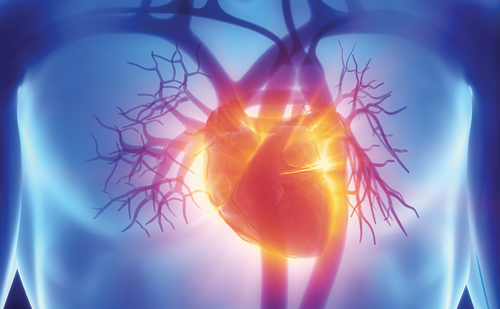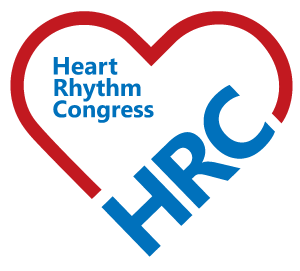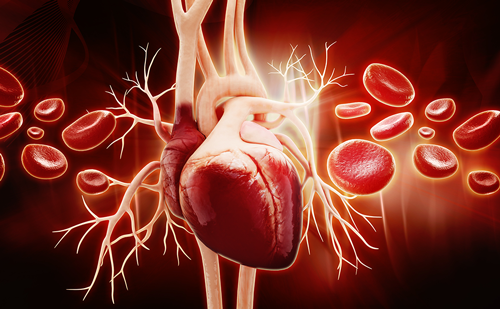Moderate-to-severe congenital heart disease, which requires specialist cardiology care, is present in around 6/1,000 live births.1 Patients born with congenital heart defects often require surgery in early life and a consequence of this initial surgical repair is pulmonary regurgitation. The severity of pulmonary regurgitation can worsen over time and present more frequent symptoms, and may require additional surgical interventions to restore the function of the pulmonary valve.2 Transcatheter pulmonary valve replacement is a less invasive technique to restore pulmonary valve function and a key benefit of this approach is to spare additional open-heart surgeries.2,3
Q. Can you explain the challenges facing physicians treating severe pulmonary regurgitation?
There are two aspects to the challenges associated with severe pulmonary regurgitation: those facing the cardiologist in routine management, and those facing the pursuit of a non-surgical intervention to provide efficacious treatment without the need for another open-heart surgery.
For physicians treating patients in the clinic, either pediatric or adult congenital cardiologists, the key challenge is that patients with severe pulmonary regurgitation experience more symptoms over time. Simply, these patients become more difficult to treat as they age. Ultimately, this can lead to development of swelling and edema of the extremities, arrhythmia and right-sided heart failure. In managing this progressing disease, cardiologists have relatively little choice of medication, in particular for addressing right-sided heart failure – most efficacious heart failure drugs are specific to left-sided disease. Cardiac surgeons are often involved in the treatment pathway with the aim of restoring pulmonary valve function.
A current treatment goal is to find non-surgical approaches to restoring function to the pulmonary valve; this is complicated by the complex anatomy and dynamic action of the right-side of the heart. These characteristics have slowed the progress of developing a transcatheter prosthesis that accommodates well into the heart anatomy when delivered non-surgically.
Q. How often do repair procedures perform suboptimally, and what are the consequences for patients living with pulmonary regurgitation?
It is important to clarify that pulmonary regurgitation is not a result of suboptimal cardiac procedures; more accurately it is a consequence of essential and complex surgery in young patients. For example, patients born with complex congenital heart disease may require surgery to address underlying defects of tetralogy of Fallot, including pulmonary artery stenosis, pulmonary valve stenosis and ventricular septal defects. The surgeon will often open the right ventricular outflow tract; however, the pulmonary valve that the patient was born with may not be restorable and additional surgical procedures are then required to address the narrowing. These complex necessary repairs leave the patient with pulmonary regurgitation.
There was a misconception that the pulmonary valve may not be critical to preserve; of the four heart valves, it is the only one that can be removed and a patient can leave cardiopulmonary bypass and the waiting room, while leading a relatively normal life. However, as patients aged with pulmonary regurgitation, they started developing more frequent and severe symptoms. This led to surgeons replacing the valve in another open-heart surgery, but also fuelled the search for non-surgical interventions.
Q. What is the rationale for an intervention designed specifically for the right ventricular outflow tract?
Until recently, the only option to manage severe pulmonary regurgitation was for the patient to undergo another open-heart surgery, which aims to restore pulmonary valve function through the implantation of a bio-prosthetic tissue valve. Interventional cardiologists have been seeking a non-surgical alternative to this approach. The first demonstration of feasibility came in September 2000 when Dr Philipp Bonhoeffer implanted a transcatheter valve in the pulmonary position in a dysfunctional right ventricular-pulmonary artery conduit; this was the Melody® valve (Medtronic, Dublin, Ireland) and was the first transcatheter heart valve replacement in the world.4
Only around 25% of patients who require restoration of pulmonary valve function have received a right ventricular-pulmonary artery conduit, while approximately 75% have the pulmonary valve removed and the area patched as part of their early-life surgery. This shifted thinking towards designing a non-surgical intervention that would work in patients without a conduit – a process that was challenged by the anatomy and dynamic motions of the right ventricle, atrium and their vessels. The next step came in 2009, when Dr Bonhoeffer placed a transcatheter pulmonary valve for the management of severe pulmonary regurgitation in a single patient for whom there were no other reasonable treatment options. Following this, development of what would become the Harmony™ valve (Medtronic) continued, and the early feasibility study was conducted from 2013 to 2015.2
The pivotal Harmony transcatheter pulmonary valve (TVP) trial was then initiated in 2017 and ended in 2019; these data are now being reported (ClinicalTrials.gov identifier: NCT02979587).5
Q. The Harmony TPV trial has recently released its preliminary results – what have you found?
The early feasibility study used only a 22 mm porcine pericardial valve (TPV 22) that, while efficacious, was only found to fit a minority of patients (approximately 9–10%). The pivotal Harmony TPV study was conducted using the TPV 22 and a 25 mm valve – the clinical TPV 25 (cTPV 25). The cTPV 25 had a frame engineered to be shorter than the TPV 22 and with wider ends to facilitate anchoring in the pulmonary artery and right ventricular outflow tract, and was estimated to be suitable for approximately 75% of potential patients.1 The pivotal trial implanted 19 patients with TPV 22 devices and 21 patients with cTPV 25 devices; subsequently a modification was performed to strengthen the cTPV 25, and 10 further patients received the modified valve (mTPV 25).
Broadly, the TPV 22 performed well in the patients suitable for the smaller valve; the cTPV 25 was associated with some unpredictability in delivery and deployment, and this was overcome in the cohort receiving the mTPV 25. At this point, 6-month data are available for the patients who received TPV 22 or cTPV 25, with release and reporting of the data for mTPV 25 eagerly awaited.
This data report for Harmony TPV demonstrated that the safety index was met successfully, with no mortality and a favorable adverse event profile. The majority of patients (89% of the 40 implants with TPV 22 or cTPV 25) achieved the efficacy endpoint of acceptable hemodynamic function at 6 months, including <20% pulmonary regurgitation and no valve re-interventions.
Two patients required valve explant and surgical intervention, both of whom did well. Three patients who received cTPV 25 required transcatheter re-intervention and received a ‘valve-in-valve’ procedure to address pulmonary regurgitation.
Q. If the Harmony TPV 6-month data are consistently supported by subsequent releases, what benefits do you envisage for both physicians and patients in the management of pulmonary regurgitation?
The first stage is to build on the pivotal trial, and this is underway in the ‘continued access study’, in which patients can receive the TPV 22 or the mTPV 25. This continuation will be supported by training in delivery for interventional cardiologists who have patients with pulmonary regurgitation who may be suited to Harmony TPV.
There will be a series of data releases that will improve our insight into the effectiveness of the intervention.3 Another report from the pivotal study will be prepared at 6 and 12 months, and the original early feasibility study will release valuable long-term (5-year) data. All tissue valves degenerate over time; long-term data will elucidate this process and then track the subsequent efficacy of non-surgical valve-in-valve intervention, which the Harmony TPV is designed to accommodate.3
The benefits of Harmony TPV for patients with severe pulmonary regurgitation are the restoration of function of the pulmonary valve, reducing workload on the right-sided chambers, and great improvement in symptoms. There is also considerable advantage in an intervention that spares the patient from additional surgery. Demonstrated efficacy and safety may prompt a shift towards earlier intervention, rather than waiting until the patient is older and symptomatic; this is of particular value in a condition where symptoms and outcomes worsen with advancing age.







